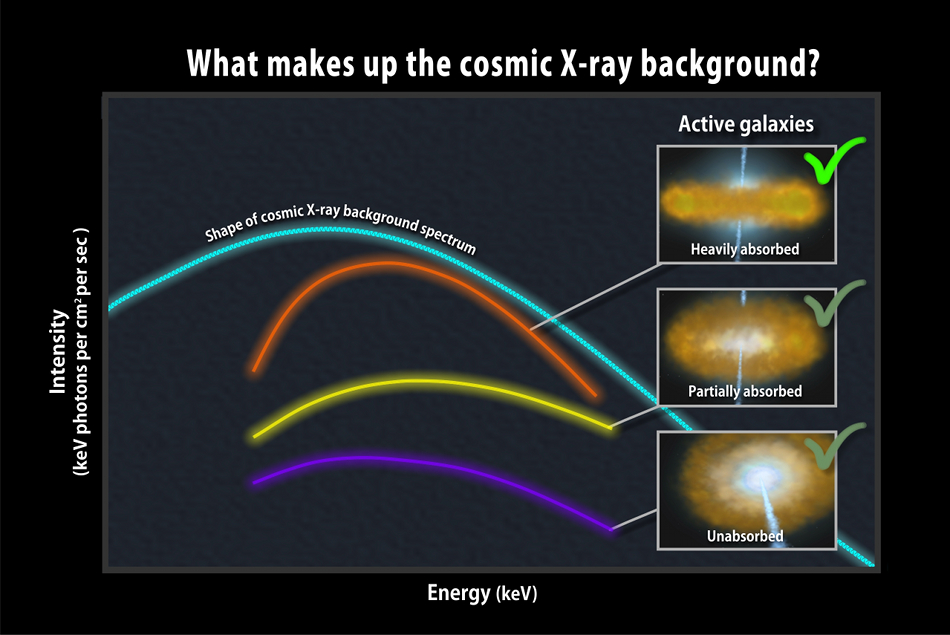
 Credit: NASA/Goddard Space Flight Center
Credit: NASA/Goddard Space Flight Center
Parsing the Background
The entire sky glows in
X-rays. No one really knows why. Unlike its (perhaps) more famous younger
cousin, the cosmic
microwave background, scientists believe that the X-ray background is not
really a diffuse glow beyond the Milky Way, but is instead mostly composed of
X-ray emission from very faint individual supermassive
central black holes in far away active galaxies. And if we had super-large
hard X-ray telescopes capable of resolving these sources spatially and detecting
them no matter how faint, we'd be able to see these individual galaxies for
study, instead of the combined haze of X-rays we see now. One way to help
resolve this issue is to try to constrain the numbers of active galaxies with
heavily obscured central back holes. But these supermassive black holes can only
be detected at very high X-ray energies, because we view them edge
on through a thick obscuring torus of gas and dust. But using the
high-energy telescope on the Swift
Gamma-ray burst hunter, scientists have been able to constrain the numbers of
such hidden supermassive black holes in our local universe. And surprisingly
these sources seem to contribute the largest amount to the X-ray background, as
shown in the schematic above.
Published: January 31, 2011
<
HEA Dictionary ● Archive
● Search HEAPOW
● Other Languages
● HEAPOW on Facebook
● Download all Images
● Education ● HEAD
>

Each week the HEASARC
brings you new, exciting and beautiful images from X-ray and Gamma ray
astronomy. Check back each week and be sure to check out the HEAPOW archive!
Page Author: Dr. Michael F. Corcoran
Last modified Monday, 26-Feb-2024 17:11:29 EST


